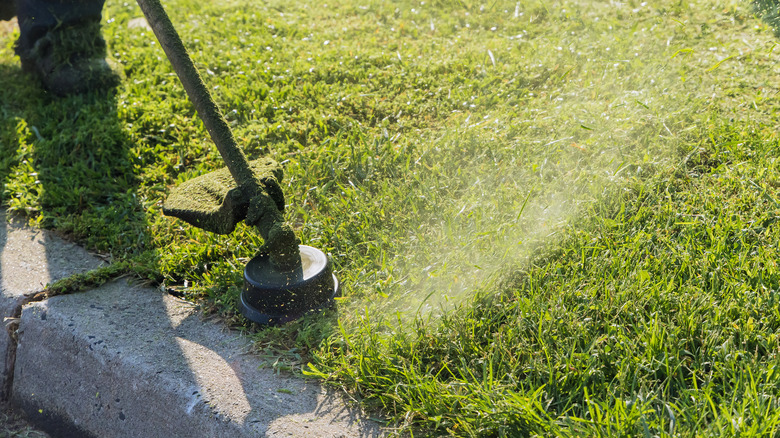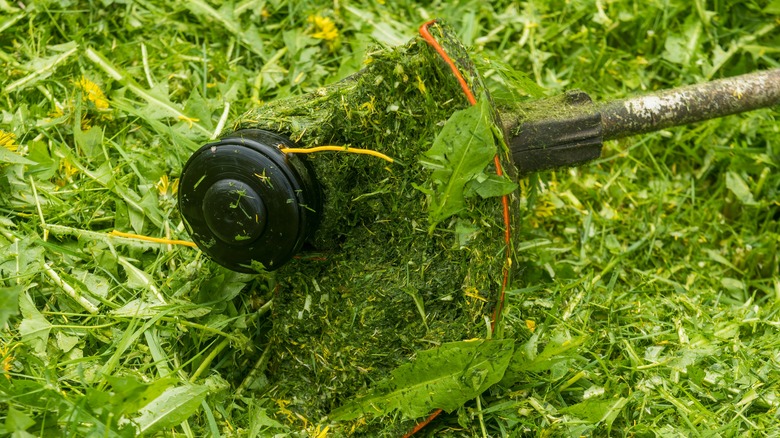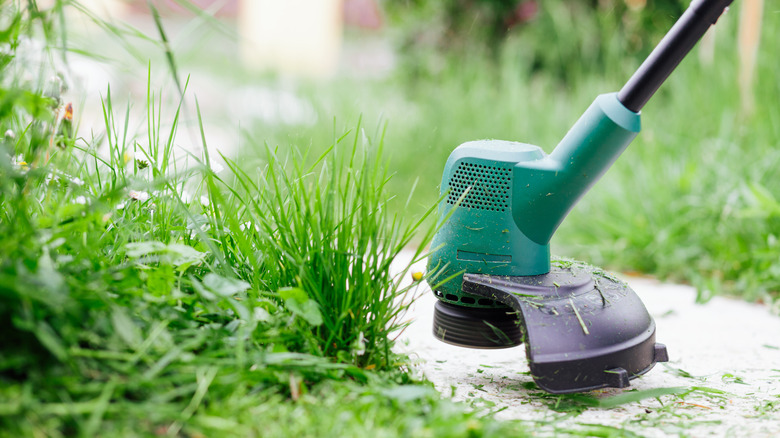Why You Should Probably Stop Using Your String Weed Trimmer To Edge Your Lawn
Maintaining a healthy and manicured lawn is essential for a home's curb appeal and requires an investment in both time and money. According to Today's Homeowner, Americans spend an average of 384 hours of their life mowing the grass. Of course, this figure doesn't include the extra chores of the yard, like aerating, trimming, edging, and weeding. Although there is significant labor involved, taking care of the lawn is a rewarding and positive experience for many Americans. And if you're in need of some new equipment this year, these Milwaukee tool products will help you whip your yard back into shape.
According to Verified Market Research, the global gas trimmer market size is estimated to reach upwards of $361.11 million by 2030, indicating its popularity in lawn maintenance. After all, how else are you supposed to get those areas of the yard the mower can't reach? However, with several tools beyond a trimmer required to keep your property looking its best, it can be tempting to cut a few corners. An edger can cost anywhere from $99 up to over $3,000. While edging improves the outline of the lawn, isn't there a cheaper option? The short answer is no. While you may toy with the idea of using your string weed trimmer to edge, there are some compelling reasons not to.
It's tough on your trimmer and dangerous
The string weed trimmer is convenient because you have a generous length of line that can extend as normal use causes it to sheer off. Trimmers are angled level with the ground surface to cut away vegetation in spots where mowing is impossible. When you tilt your trimmer and attempt to edge the lawn between the grass and pavement, you inevitably clip the sidewalk or driveway, instantly destroying the string. This can cause you to go through large amounts of line, and be forced to stop working to reload additional string.
The other issue pertains to safety, because bits of string, rocks, and other material can go flying through the air as you force your trimmer to edge. While flying debris happens during normal use, you'll notice every trimmer has a guard between the spinning mechanism and the user. Once you turn a trimmer on its side, you aren't as protected from airborne material as you are with regular use. However, some products do combine both a trimmer and edger, like the Bauer 5.5 Amp 15-inch Electric String Trimmer included among weed eaters that will come in handy when detailing your lawn.
It harms your grass and takes longer
One of the challenging aspects of using a trimmer to do edge work is that it's awkward to get the correct angle when cutting the grass. It may seem trivial, but cutting the grass blades at the wrong angle or too deep, causes damage to the roots and soil your lawn needs to be healthy. Many edgers include depth settings and a stabilizing wheel to help preserve the shape of the lawn.
While you might save some money initially using a trimmer instead of an edger, it may take you significantly longer. First, depending on the thickness of your grass, you may be required to go over the same area multiple times. Secondly, you'll be holding the total weight of the trimmer the entire time and may require several breaks to rest your tired arms. Many edgers ride along the ground on a wheel, with the blade positioned against the grass. Therefore, you aren't required to support the unit's full weight while you go around the perimeter of your property.


